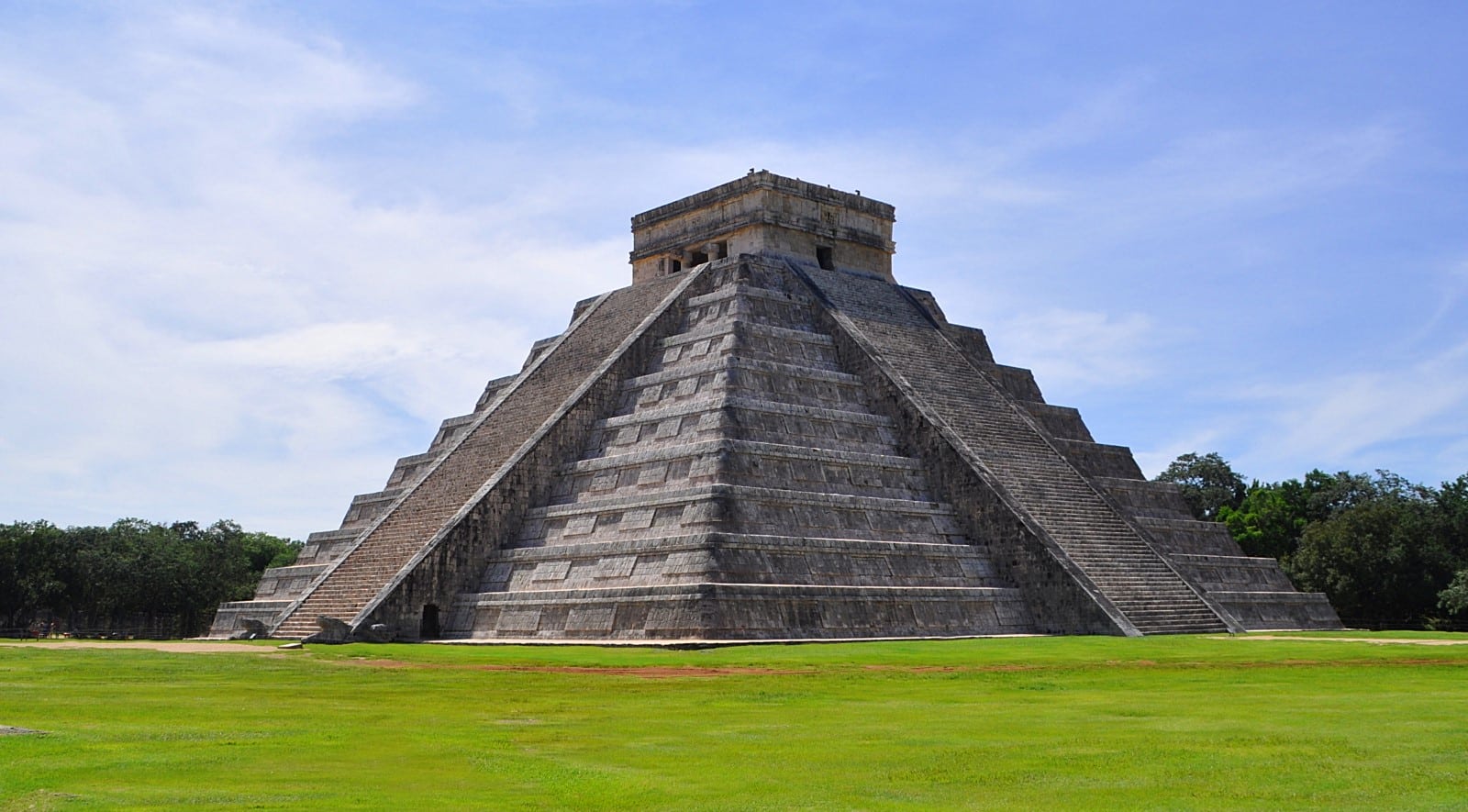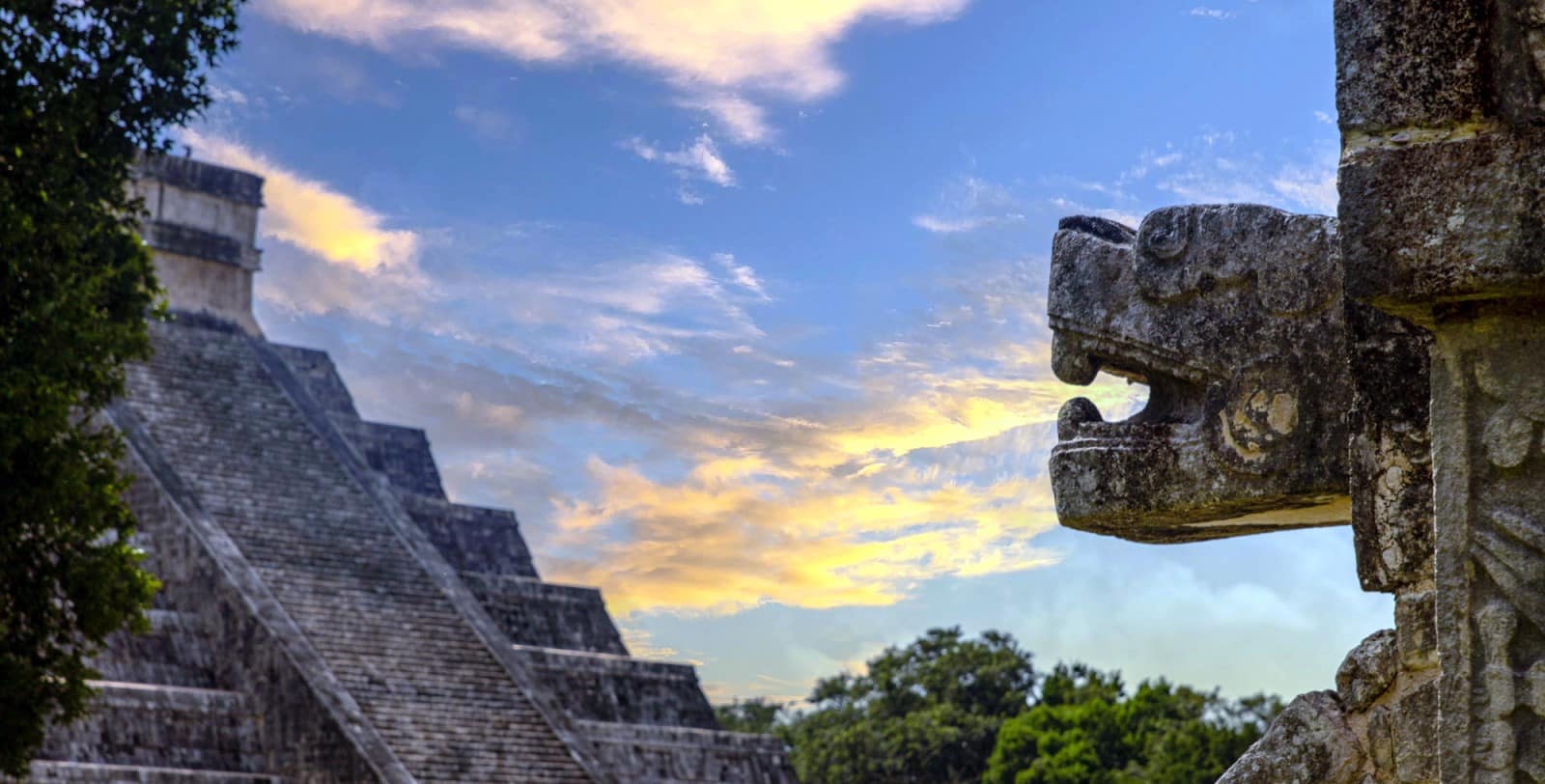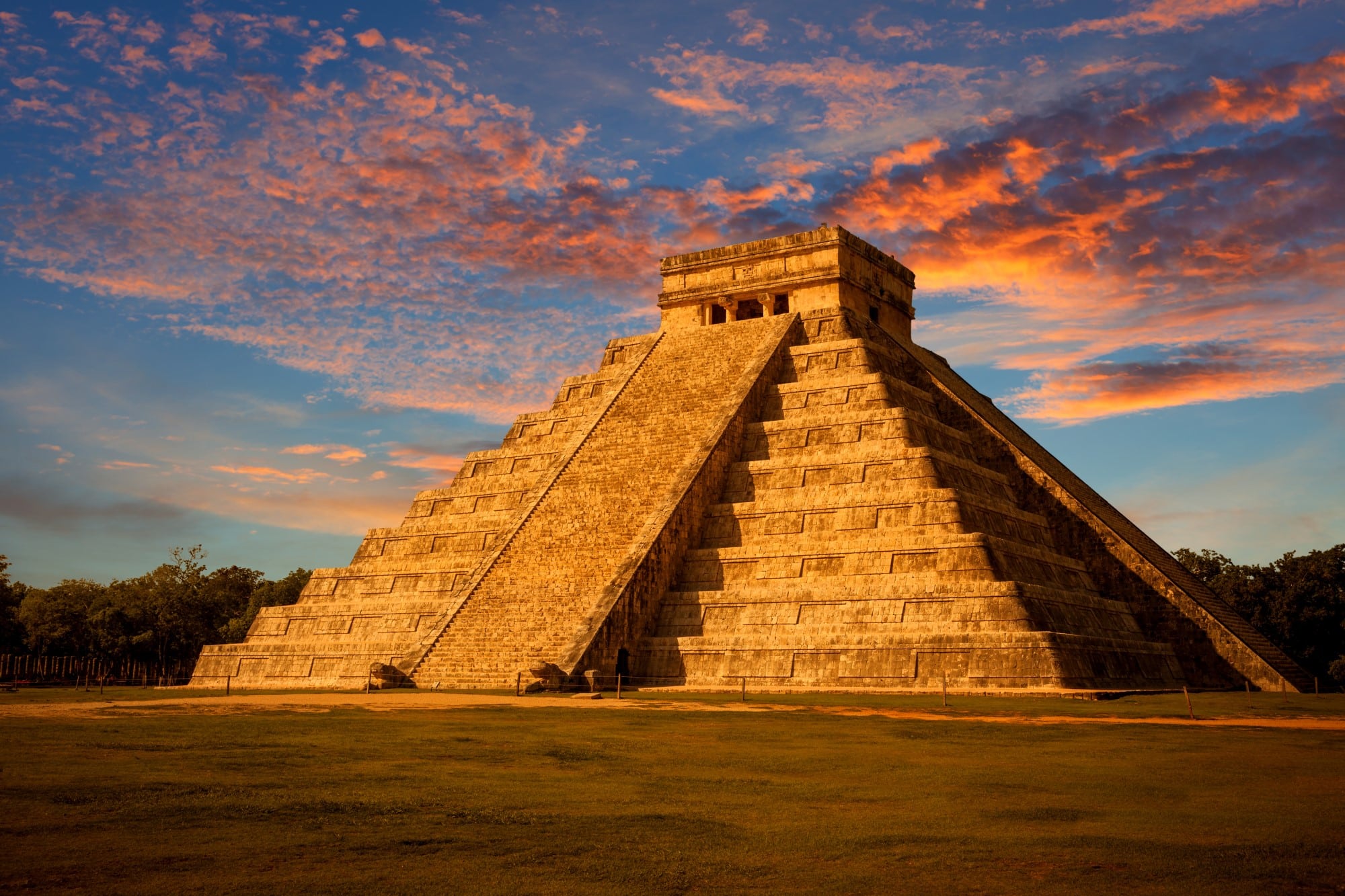
Chichén Itzá, located in the Yucatán Peninsula of Mexico, is one of the most significant and well-known archaeological sites of the ancient Maya civilization. The history and allure of Chichén Itzá are rooted in its architectural, astronomical, and cultural significance.
A Brief History
The site was settled as early as the 6th century AD. It became a regional center of power in the northern Maya lowlands by the end of the Early Classic period (around 600 AD). Between 800 and 1050 AD, Chichén Itzá experienced a major expansion and became a powerful city-state. This period is characterized by the construction of its most famous structures, like the Pyramid of Kukulcán (El Castillo) and the Great Ball Court. The city’s influence started to wane in the 13th century. By the time the Spanish arrived in the 16th century, Chichén Itzá was no longer a powerful site, although it still held spiritual significance for the Maya.
Its decline was more due to internal strife, shifts in trade routes, and possibly environmental changes. The Spanish conquest of the Yucatán Peninsula happened long after Chichén Itzá’s prime. The population likely migrated to other sites or integrated with other emerging power centers in the region, such as Mayapán.
The Chichén Itzá Observatory
The observatory at Chichén Itzá, known as “El Caracol” (Spanish for “The Snail”), is a distinctive and fascinating structure that reflects the advanced understanding of astronomy possessed by the ancient Maya. El Caracol, named for its spiral staircase, is believed to have been used for astronomical observations, which played a significant role in Mayan culture.
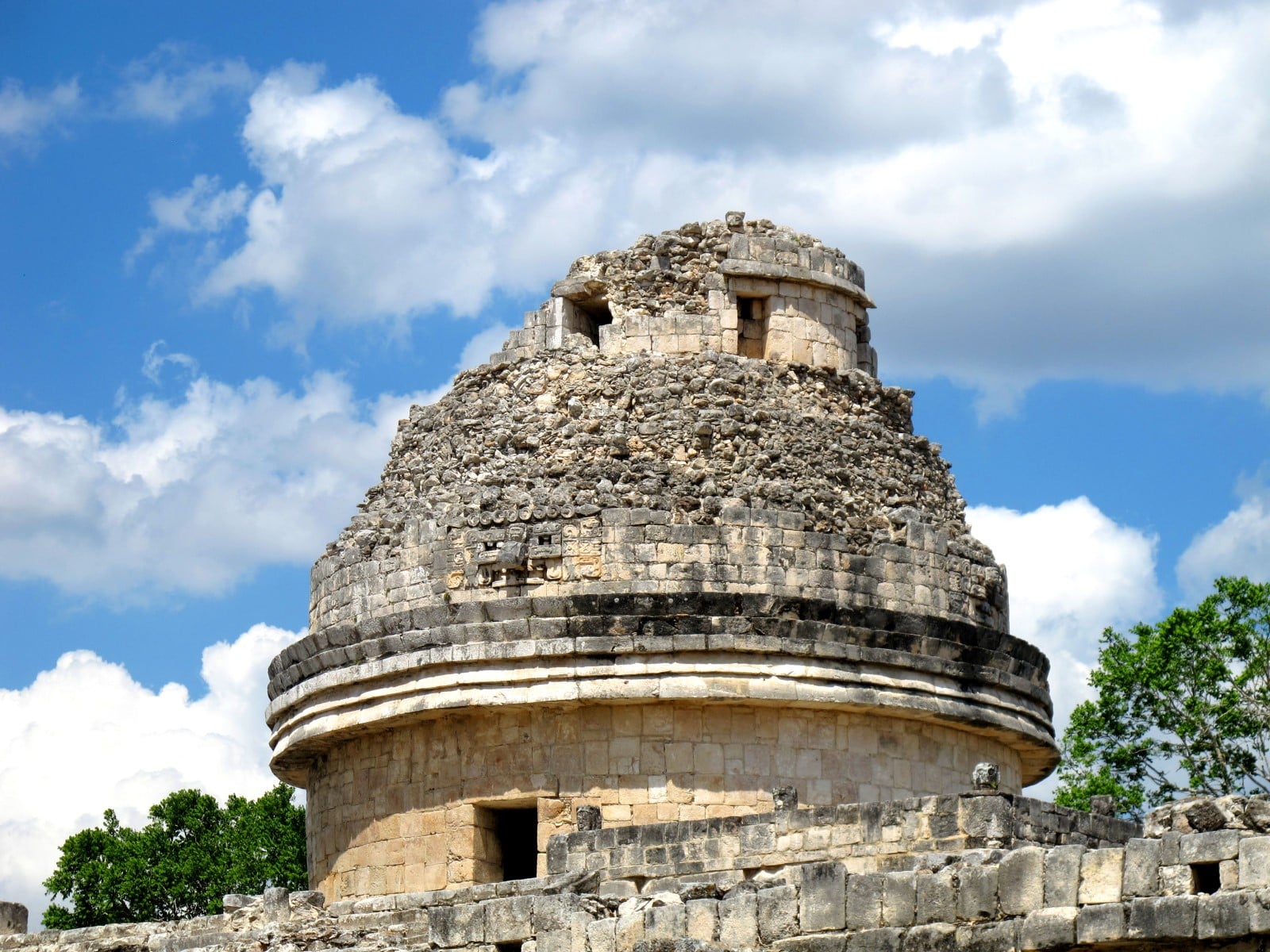
El Caracol is circular in shape, quite different from the pyramid-like structures typically found in Mayan cities. The building consists of several layers, with a circular tower on top. Inside the tower is a spiral staircase, which is why the building is named “The Snail.” This design is unique among Mayan structures. The tower has windows and doors aligned with astronomical events. These openings are strategically placed to observe the movements of celestial bodies.
Some of the windows in El Caracol align with the sun’s position at the summer and winter solstices. The Maya were very interested in the planet Venus, and El Caracol has alignments that correspond to the extreme northern and southern positions of Venus in the sky. The observatory may also have been used to track other celestial events and bodies, such as the moon and possibly certain stars.
The Las Monjas Complex
“Las Monjas” (Spanish for “The Nuns”) is one of the notable complexes of buildings in Chichén Itzá, a major archaeological site of the ancient Maya civilization in Mexico. Despite its name, which was given by the Spanish after the conquest, it was not a convent or residence for nuns. The name “Las Monjas” is a misnomer, as the complex’s original purpose and use in Mayan culture were quite different.
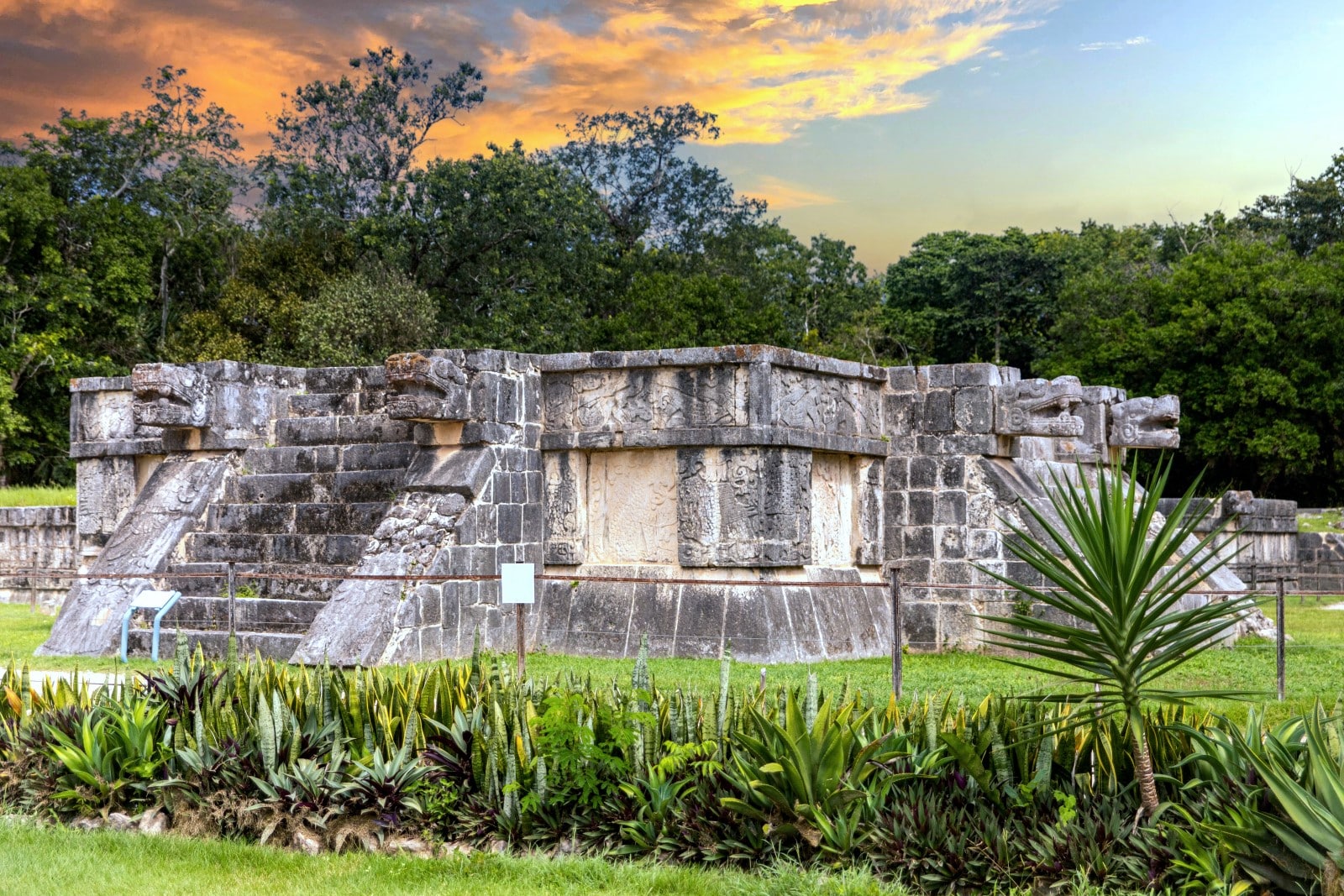
The architecture is representative of the Puuc style, characterized by intricate stone carvings and mosaic decorations. It’s adorned with elaborate façades and figures, such as Chaac masks (representing the rain god) and other religious and mythological symbols. The intricate carvings and architectural sophistication of Las Monjas make it an excellent example of the artistic and architectural capabilities of the Maya. Its scale and complexity of the complex suggest the importance of the site in the political, religious, and social life of Chichén Itzá.
What Makes the Area Interesting
The site exhibits a variety of architectural styles, including the iconic step pyramid of El Castillo, which shows astronomical sophistication. It was a center of worship and pilgrimage, particularly for the worship of Kukulcán, the feathered serpent deity. Many structures were built with astronomical alignments. For example, during the equinoxes, the play of light and shadow on El Castillo creates the illusion of a serpent slithering down the staircase.
The largest and most impressive ball court in Mesoamerica, where the ancient Mesoamerican ballgame was played. The Great Ball Court has two parallel walls with vertical stone hoops attached high up. The primary objective was to pass the ball without using hands or feet – typically using the hips, thighs, or upper arms – and possibly score by getting the ball through one of the stone hoops, although this may have been a rare event given the difficulty. It is rumored that the losing team were beheaded in some ritualistic matches.
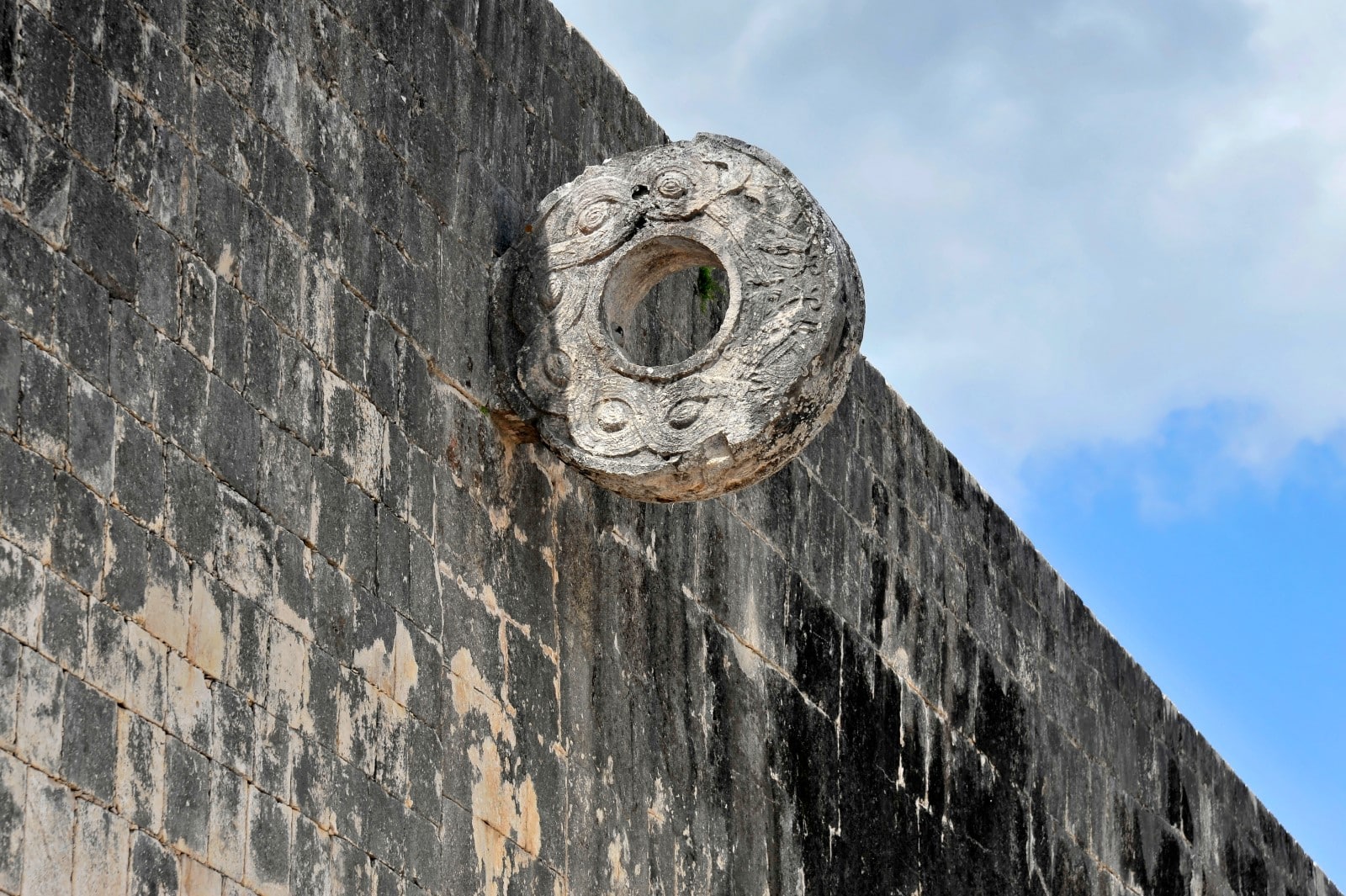
Recent Archaeological Discoveries
In recent years, archaeologists have discovered a series of underground water tunnels and caves beneath the site, which were significant in Maya rituals. Advanced imaging techniques have revealed more about the urban layout and complexities of Chichén Itzá. Ongoing excavations often reveal new artifacts, structures, and insights into the Maya civilization.
Respecting Local Culture
When visiting Chichén Itzá, as with any historical and cultural site, there are several customs and traditions that travelers should be aware of to show respect and ensure a positive experience:
- Respect the Structures: Climbing on the ruins is generally prohibited to preserve the integrity of these ancient structures. This is particularly important for the main pyramid, El Castillo.
- Photography Etiquette: While photography is allowed, using flash is often prohibited, especially inside the structures. Drones are restricted and require special permissions.
- Environmental Care: Dispose of trash properly and avoid touching or marking the ancient structures. The site is part of a delicate ecological and historical environment that requires care.
- Respect for Ceremonies and Rituals: If you happen to witness any traditional Maya ceremonies or rituals taking place, observe quietly and respectfully from a distance. Do not interrupt or try to participate unless explicitly invited.
- Local Guides: Using local guides not only provides employment but also ensures a more informed and respectful visit. Guides can offer insights into the site’s history, architecture, and cultural significance that you might not get otherwise.
- Purchase of Artifacts: Buying original artifacts is illegal. However, supporting local artisans by purchasing replicas and handicrafts is a great way to contribute to the local economy.
Take time to learn about the Maya culture, both ancient and contemporary, as this will deepen your appreciation of the site. The site can get crowded, especially during equinoxes and peak tourist seasons. Be patient and considerate of others trying to enjoy and photograph the site.
Getting There
Getting to Chichén Itzá and finding suitable lodging or camping options depend on your preferences, budget, and the type of experience you’re looking for.
- By Air: The closest major airports to Chichén Itzá are in Cancún and Mérida. Cancún International Airport is about a 2 to 2.5-hour drive to Chichén Itzá, while Mérida’s airport is approximately 1.5 hours away.
- By Road: You can rent a car from Cancún or Mérida. The roads are generally in good condition and well-signed.
- Public Transportation: ADO buses run regularly from Cancún, Mérida, and other cities in the Yucatán Peninsula to Chichén Itzá.
- Guided Tours: Many tourists opt for guided tours, which can be booked from Cancún, Playa del Carmen, Tulum, and Mérida. These tours often include transportation, entry fees, and a guided tour of the site.
Best Places to Lodge
- Valladolid: A charming colonial town about 40 minutes from Chichén Itzá. It offers a range of accommodations from budget hostels to boutique hotels. Staying in Valladolid also gives you a chance to explore its own rich history and culture.
- Pisté: This small town is very close to Chichén Itzá, just a few minutes away. It’s ideal if you want to get to the site early in the morning before the crowds. Accommodations here are more basic but usually cheaper.
- Mérida: The capital city of Yucatán, Mérida, offers a wide range of lodging options, from luxury hotels to budget-friendly stays. It’s about a 1.5-hour drive to Chichén Itzá.
- Cancún or Playa del Carmen: If you prefer a beach holiday with a day trip to Chichén Itzá, consider staying in Cancún or Playa del Carmen. These locations offer a wide variety of accommodations and are suitable for longer stays.
Camping Options
- Near Chichén Itzá: While there are limited camping options right next to the archaeological site, some nearby eco-tourism resorts and haciendas may offer camping or more rustic lodging options.
- Cenote Camping: Some cenotes (natural sinkholes) in the Yucatán Peninsula offer camping facilities. This can be a unique experience, allowing you to enjoy the natural beauty of the area.
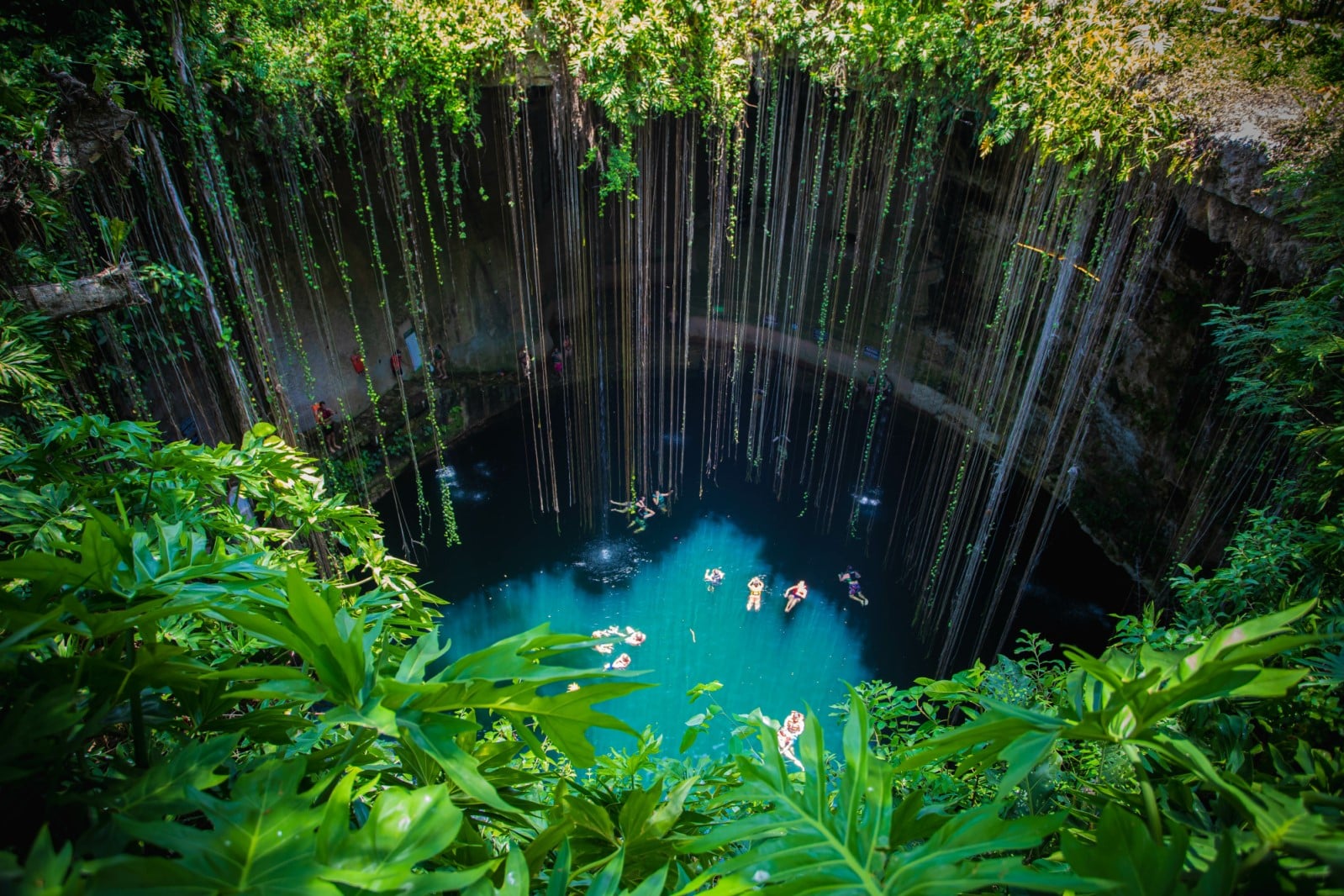
Tips
- Book in Advance: Especially during peak tourist seasons, it’s advisable to book your accommodations in advance.
- Consider Your Interests: If you’re interested in exploring other Mayan ruins or cenotes, choose a location that allows easy access to these attractions.

